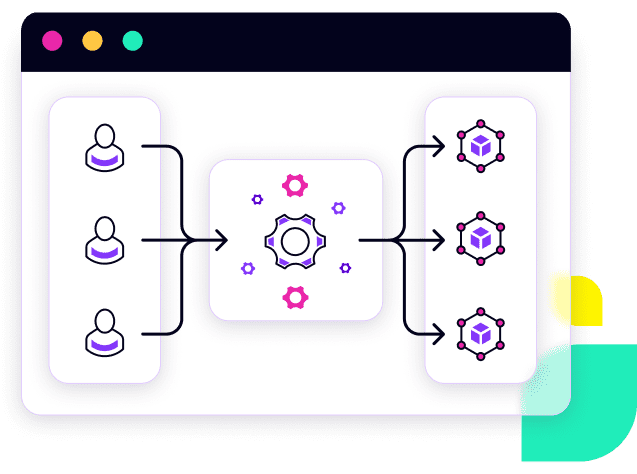API gateway deployment
The API gateway deployment pattern with Tyk
Having consistent, lightweight APIs that you manage centrally can put you in control like never before.
You just need to choose the right API gateway and the right deployment pattern.
The API gateway deployment pattern you select will be based on your particular business needs. Whether you deal with worldwide money transfers, healthcare, international travel or anything in between, the ideal deployment can provide you with outstanding security while also unlocking your true operational potential.
Tyk is the ideal API gateway, and with the API deployment patterns detailed below, you can rest assured that whatever your setup looks like, we’ve got you covered.
The right API gateway deployment pattern for your business
Centralised edge gateway
– able to handle everything from authentication, authorisation and request routing to SSL/TLS termination, rate limiting, façade routing and request/response manipulation. Ideal for monoliths with publicly exposed application services.
Two-tier gateway
– delivers authentication, authorisation, SSL/TLS termination, centralised connection and request logging, tracing injection, service discovery and load balancing. Multiple gateways are used to provide flexibility for dispersed services, with different gateways handling security and routing.
Microgateway
– enables SSL/TLS termination, routing, rate limiting, authentication, service discovery and load balancing. Can work well for microservices, with the right API management approach.
– delivers all the functionality of an edge gateway, along with authorisation, inter-service authentication, outbound load balancing and service discovery integration. Best implemented with a service mesh to avoid unnecessary control plane complexity, this deployment pattern facilitates microservices speaking directly to each other.
Getting the API gateway deployment pattern right
The API gateway deployment pattern sees the gateway provide a single entry-point. It sits between your microservices and your client apps and acts as a reverse proxy, routing requests, translating protocols and managing traffic. You can use one or multiple gateways to achieve this.
Whether you opt for a centralized edge, two-tier, micro or sidecar gateway (or any other deployment pattern) will be dictated by the needs of your business. Your API gateway pattern can deliver a mixture of cross-cutting features, such as client authentication, SSL/TLS termination, rate limiting, centralised logging and more.
Achieve a multi-cloud presence
Tyk is containerized and lightweight. You can scale vertically, horizontally and infinitely to achieve a multi-cloud presence with ease.
Deploy anywhere
Deploy Tyk anywhere: any cloud or bare metal, it’s your call. Fit Tyk around the needs of your business, not the other way around.
Enjoy lightweight performance that delivers
Tyk is lightweight yet highly performant. Allow your developers to build faster by offloading boilerplate to the API gateway.
